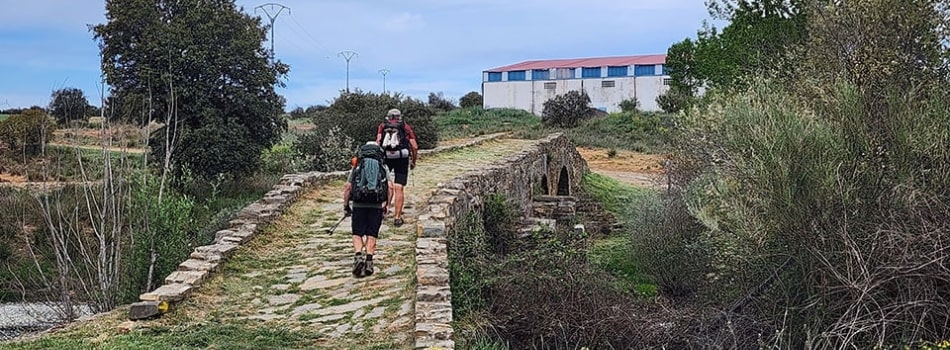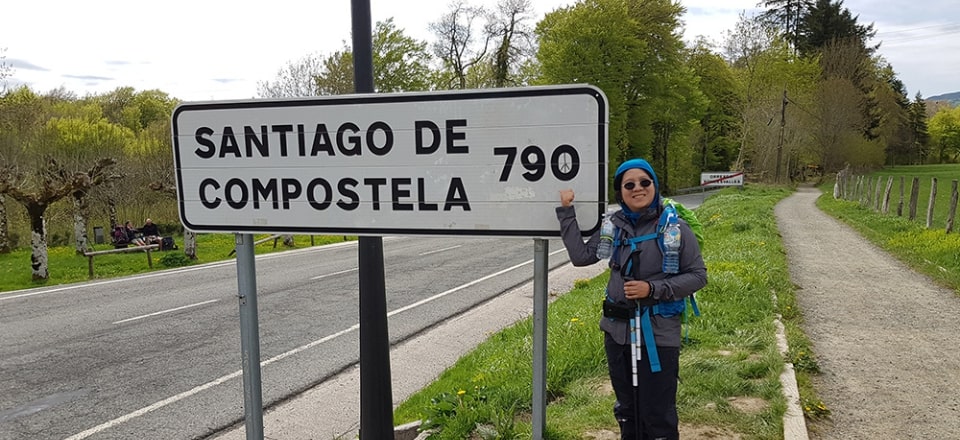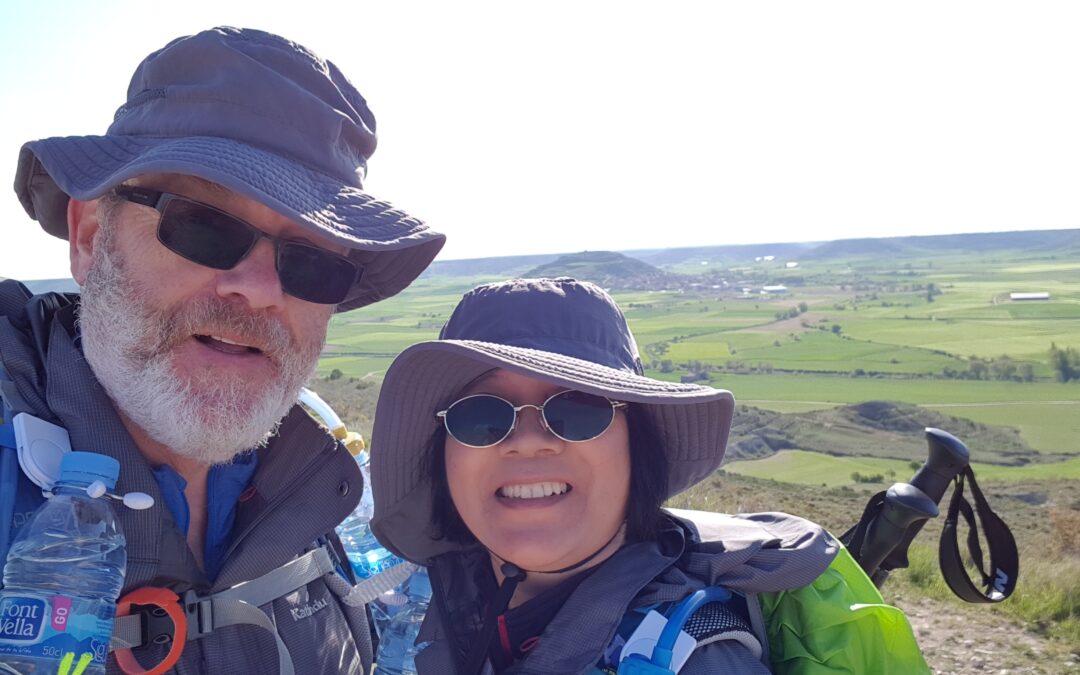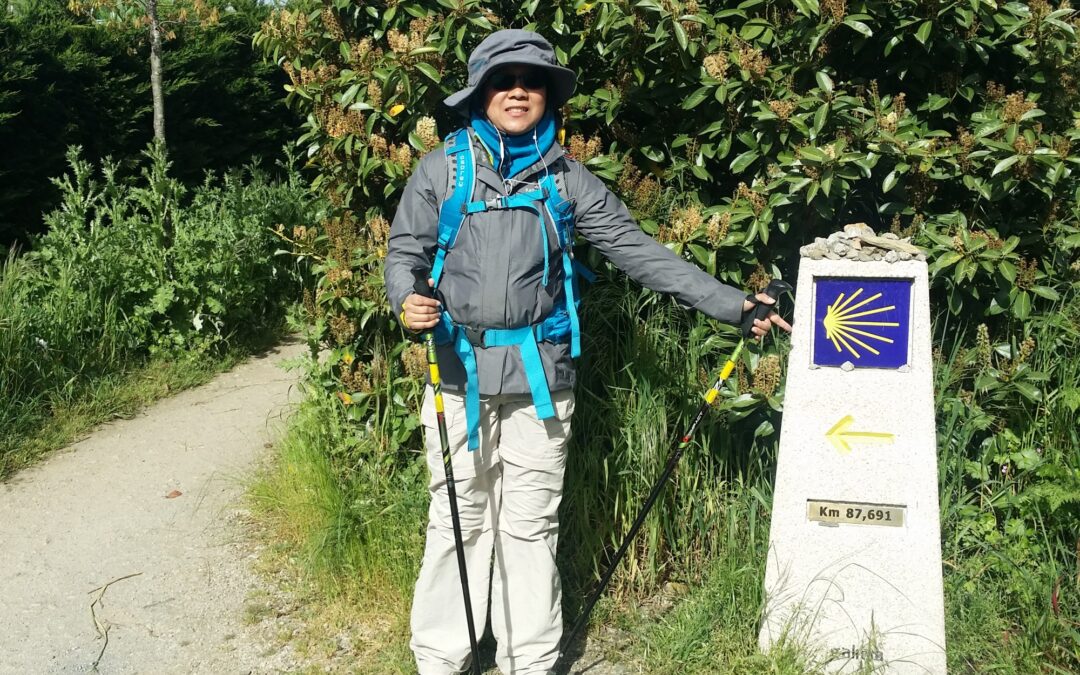By someone who’s walked a few and still keeps going back…
🧭 What exactly is the Camino de Santiago?
The Camino de Santiago, or “The Way of St. James,” is a collection of ancient pilgrimage routes that all end at the cathedral in Santiago de Compostela in Spain, where tradition says the remains of Saint James the Apostle are buried.
But here’s the thing, it’s not just one route. Think of it like a spiderweb of trails stretching across Europe, with pilgrims filtering into Spain from all directions. The most well-known path is the Camino Francés, with St Jean Pied de Port in France being a popular starting point, and running roughly 800 km to Santiago. But there are dozens of others: the Camino Portuguese, the Primitivo, the Norte, the Via de la Plata… each one with its own flavour.
Historically, Pilgrims used to strath their Pilgrimage from their homes. So there is no actual “starting point” as such.
🚶 Which Camino route should I choose?
There’s no one-size-fits-all answer here, it really depends on you.
If you want the “classic” Camino, complete with pilgrim camaraderie, historic towns, and plenty of Albergues, go for the Camino Francés. If you’d prefer a quieter, coastal vibe, the Camino del Norte might suit you better (though it’s tougher on the knees).
I’ve walked several, and honestly, each one has its own charm. Ask yourself: Do I want crowds or solitude? Mountains or coast? Simplicity or a challenge? And don’t forget—you don’t have to walk for weeks. Many people start in Sarria (the last 114 km) if time is tight or they’re just testing the waters.
A great resource to look at the various routes is the Gronze website. If you use Chrome Browser it will auto translate.
🕰️ How long does it take to walk the Camino?
That depends on the route and your pace. The Camino Francés from St Jean takes about 32-40 days if you’re walking an average of 20–25 km a day. But you can walk shorter sections, or take longer if you prefer a slower pace with rest days.
If you’ve only got a week or two, don’t stress. Just pick a section. The Camino will still be there next year. And the year after that. Trust me, it has a way of pulling you back.
🌦️ When’s the best time to go?
For many people, May, June, and September are ideal. The weather’s usually good; not too hot, not too cold. July and August can be hot, especially on the Meseta. Be aware though, those popular months can be the busiest.
Autumn (late September into October) can be beautiful too, with fewer crowds and golden landscapes, but there’s more chance of rain. Winter? It’s possible, but many Albergues are closed, and the higher routes can be snowy and risky. If you’re up for solitude and hardship, it could be your thing. But I’d say it’s for experienced Pilgrims/Hikers only.
🥾 Do I really need to train?
Let’s be real: you’re about to walk hundreds of kilometres with a pack on your back. So yes, training helps. You don’t need to be super fit, but you do need walking stamina.
Before my first Camino, I walked 10–15 km most weekends with a loaded pack. It helped massively. Also: break in your shoes. And your socks. And your body. Nothing ruins the Camino faster than blisters or sore knees.
If you are overweight, losing some weight first can make things much easier. For my last Camino I lost about 15 kgs using Intermittent Fasting.
🎒 What do I pack?
Less than you think. I follow the “pack it, then remove half” rule.
You’ll want:
- Lightweight backpack (30–40 litres)
- 2 sets of clothes (the set you wear plus a change)
- Rain gear
- Toiletries (minimal!)
- Small First aid kit (for blister prevention)
- Lightweight Sleeping Bag or Liner if staying in Albergues
- Sunscreen, hat, earplugs, and a sense adventure
You’ll be surprised how little you actually need. And if you forget something? There’s always a Decathlon somewhere. I aim for a pack weight of about 6 kgs (plus food and water). My wife Pat aims for 4.5 kgs.
This is what I pack:
🗣️ Do I need to speak Spanish?
No, but a little goes a long way. A few basic phrases like “una cama por favor” (a bed please) or “dónde está el albergue por favor” (where’s the hostel please?) can really help, especially in small villages.
That said, on the main routes, locals are used to pilgrims and many speak a few words of English. And when words fail—gestures, smiles, and pointing usually get the job done.
As a last resort, use Google Translate!
🛏️ What’s the deal with accommodation?
Albergues are very popular, pilgrim hostels ranging from basic to surprisingly luxurious. Expect bunk beds, shared bathrooms, and snoring roommates. There are also private hostels, hotels, pensions, and the occasional monastery or convent stay.
Some people plan ahead and book; others prefer to wing it. I tend to book the first 3-4 days and then 1 night ahead. Booking too far ahead limits your flexibility in walking distances and changes to stopping points.
Here is a great example of an Albergue. Don’t expect them all to be this good!
🍷 What’s the food like?
Simple, hearty, and usually quite cheap. Most places offer a pilgrim menu for €10–€14 three courses and wine or water. You’ll also find tapas, bocadillos (sandwiches), and small shops and supermarkets to stock up on snacks.
Look out for the Menu del Dia. Usually offered at lunch time. It’s a few Euros more than the Pilgrim Menu but much better quality. It’s what the locals go for.
Breakfast is basic, toast and coffee usually. If you like a big breakfast, you’ll need to fend for yourself. Sometimes you can get ham, eggs and the like, but learn how to ask for it. Oh, and the wine in Spain? It’s usually cheaper than soft drinks. Not kidding.
💶 How much does the Camino cost?
If you’re budget-conscious, you can do it for €25–€35/day, staying in municipal albergues and cooking some of your meals. If you prefer a private room and the odd splurge, maybe €50–€70/day.
I usually hover somewhere in between—some days are cheap, others more indulgent. But compared to most overseas trips? It’s very affordable.
For a detailed breakdown of Camino costs and a cost planner, check this out.
🗒 Do I need a Pilgrim Credential and Compostela?
Yes. The Pilgrim Credential (or “credencial”) is your Camino passport. You collect stamps along the way to prove how far and where you have walked, and need at least two a day in the last 100 km to earn your Compostela (certificate) in Santiago.
The Pilgrim Credential is also required to stay in Pilgrim only accommodation.
You can get the credencial from pilgrim offices, churches, and some albergues before or at the start of your walk.
📦 Can I send my backpack ahead?
You can. If you’re carrying injuries, or just want a break, luggage transfer services like Correos or Jacotrans will move your bag to the next town for a few euros. But I would urge you to pack very light and carry your own gear. It gives you a tremendous sense of freedom, flexibility, and accomplishment.
🧳 Do I need a Camino Tour Company / Agency?
No you don’t. It’s easy to plan and book everything yourself. I would never rely on a Tour Company to “control;” my Camino. I’ve seen too many people regret the decision as they tried to walk daily distances that were too hard, or ended up staying in accommodation well away from their new friends.
If through physical ability, you need the support of a Tour Company, then I’m sure the added support is worthwhile. But be aware your Camino will also cost you about double.
If you’re worried about planning it all yourself, don’t be. Here is a Guide.
🧘 Do I have to be religious to walk?
No. Some pilgrims walk for religious reasons, but many go for self-discovery, healing, fitness, or just a break from everyday life.
For me, the Camino is more spiritual than religious. It’s a long walk with a purpose, and somehow—somewhere along the way—it always teaches you something.
Whatever reason you are walking the Camino, please respect the tradition of the Camino, it’s deeply Religious past and those who might be walking in devotion.
🧍 Is it safe?
Yes. I’d say that the Camino is one of the safest solo travel experiences you can have. Pilgrim communities are supportive, locals are friendly, and crime is rare. Still, basic travel smarts apply, and don’t leave valuables lying around and stay aware in cities.
Always keep your valuables on your person, even going to the shower! There have been cases of thieves posing as Pilgrims to steal money and phones.
💭 What’s the Camino really like?
It’s beautiful. It can be painful. It will be emotional. It’s joyful, and unforgettable.
Some days you’ll wonder what the hell you were thinking. Other days you’ll wish it would never end. And when it does end… well, chances are you’ll be planning the next one before you even get home.
People often talk of the Camino taking place in three phases. Some Pilgrims go through these phases, and some don’t. But being aware of them might help you.
Camino Phase 1 – The Physical
It can take a few days, a week on my first one, just to get used to the physical effort and daily routine. How to use your gear comfortably, how to take care of your feet, and the daily cycle of Walk-eat-Sleep-Repeat.
Camino Phase 2 – The Emotional
Once you are used to the physical effort and routine, you may find that the emotion of the journey grows. You might question why you are walking. What you hope to achieve. If the effort is worth it. Maybe even a feeling of selfishness if others at home are having to cope without you. These are all natural. If you go through this phase it can be a challenge. It was for me the first time. I had to remind myself constantly of why I was doing this, that those at home were OK without me for a while. I felt like quitting more than once!
Boredom, loneliness, or a mental slump can creep in as the novelty wears off. Stick with it. Many pilgrims reflect deeply at this point, processing life events, letting go of stress, or just sitting with their thoughts.
Camino Phase 3 – The Spiritual
For me this is where the magic happens. Once I’m physically and emotionally coping and comfortable with the journey. This phase is often described as a spiritual or emotional culmination, regardless of religious beliefs.
- The landscape becomes greener and more scenic (especially in Galicia).
- Emotions can run high as the end approaches, gratitude, sadness, anticipation.
- Some describe this phase as “walking home to themselves.”
Each phase can reflect a transformation. Body → Mind → Spirit.
And for many, the real Camino begins after Santiago.
Camino Mindset
If I can offer one piece of advice it’s this.
Walk with an open heart and an open mind.
OK, what does that mean?
Be accepting of others. Don’t judge. Be kind, Help your fellow Pilgrims. Don’t have firm expectations about the journey. Accept that plans go wrong. Embrace the “curved balls”. Often they are for a reason. Relax into your journey, and let it reveal itself, whatever that might be for you.
If you have any specific questions about the Camino de Santiago, feel free to ask below.
Or if you haven’t yet found my YouTube Channel, it has hundreds of videos in a range of playlists that will answer most questions.
There are also day by day videos from my Caminos.
The last ones being.






0 Comments